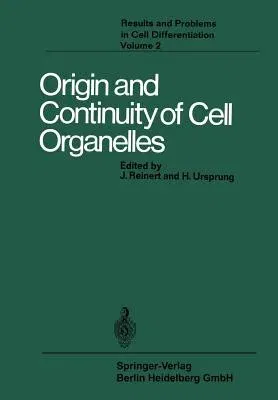The first volume of the series, on "The Stability of the Differentiated
State" received many favorable reviews from the scientific community.
Many readers seem to agree with us that publication of topical volumes
is a worthwhile alternative to periodic compilations of rather
unrelated, though up-to-date reviews. Production of topical volumes is
however, plagued with one great difficulty, that of "author
synchronization". This difficulty explains the lag between volumes 1 and
2 of the series. Nevertheless we hope that the present volume will be
appreciated as a valuable source of information on its central topic:
How do cell organelles originate, and what mechanisms assure their
continuity? Tübingen, Berlin, Zürich, \V. BEERMANN, J. REINERT, H.
URSPRUNG, Heidelberg H. -W. HA GENS Contents Assembly, Continuity, and
Exchanges in Certain Cytoplasmic Membrane Systems by W. GORDON WHALEY,
MARIANNE DAUWALDER, aüd ]OYCE E. KEPHART 1 I. The Nature of the
Membrane. . . . . . H. The Assembly of Membranes . . . . . . 5 III. The
Growth and Transfer of Membranes. 6 A. The Nuclear Envelopc . . . 6 B.
The Endoplasmic Reticulum 13 C. The Golgi Apparatus . 17 D. The Plasma
Membrane 28 E. Vacuoles and Vesicles 31 IV. Concluding Remarks 37
References . . . . . 38 Origin and Continuity of Mitochondria by ROBERT
BAXTER 1. Introduction . . . . . . . . . . . . . 46 H. Mitochondrial
Biogenesis: thc Machincry 46 III. Limitations of Mitochondrial Autonomy
50 IV. The Replication of Mitochondria 53 V. Discussion and Conclusion
58 Referenccs . . . . . . . . . 59 Origin and Continuity of Plastids by
\VILFRIED STUBBE 1. Introduction . . . . . . . . . . . . . 65 II.
Arguments for the Continuity of Plastids .


